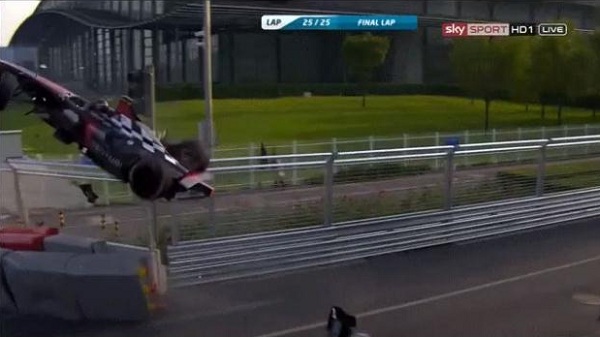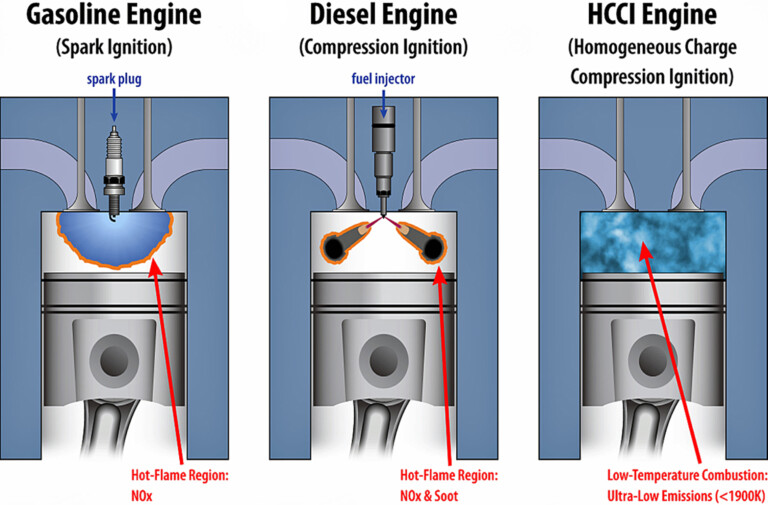Formula E is a new series that has captured the interest of the more forward-thinking racing aficionados across the world. Though these cars are relatively heavy at 900 kg, their sophisticated, electric powertrain gives them tons of low-end torque and makes them challenging, rewarding cars to drive. A thorough understanding of their powertrains seems to be crucial to getting a consistent level of performance from these cars, as we see with the first-shown accident.
On the first several laps, braking performance isn’t at its best since the regenerative system hasn’t been fully charged. Therefore, braking ability is a bit uncertain, and drivers really have to try to feel how much they can take out of the brakes. When first-lap overtaking is necessary, this inconsistent feel can leave drivers looking the wrong way, as we see here.
Interestingly, the weight of the electric motor may have a significant effect on the balance of the car – it seems quite easy to spin these cars under braking and into corner entry. Off throttle, that massive battery may have an effect and, like an old 911, give the car a propensity to swap ends.
The most dramatic incident in this list has got to be the collision between Nick Heidfeld and Nico Prost. Two top drivers with Formula One experience, Heidfeld and Prost touch during a last lap battle, sending Heidfeld into the barriers. Thankfully, he emerges unscathed but it could’ve been worse had these cars not been so safe. The salient issue is the sound these cars emit and whether they’re a hindrance. Since it’s so difficult to see out of a single-seater, the sound of a competitor’s car is often something you’ll rely on to know he’s nearby or staging an overtake. Without that sound, it’s much harder to notice he’s there, as we see here. Should loud exhausts be mandatory? Watch and decide.






















